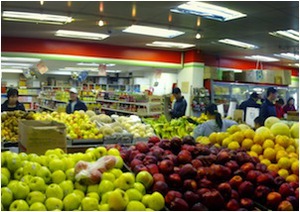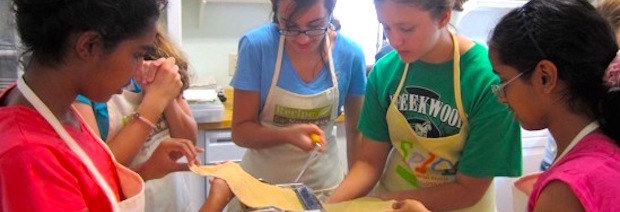 A recent study by Johns Hopkins compared grocery and food access across the spectrum to test popular thinking that healthy choices improved as families worked thier way up the economic ladder. The findings might surprise you. We already knew that poor, racially segregated black neighborhoods lack supermarkets and the study reconfirmed that. But the small grocery stores they do have offer very few healthy products, instead favoring high fat, salt and sugary foods on their shelves. Though segregated Hispanic neighborhoods also have fewer supermarkets, their small gracers tend to stock healthier items. Even more shocking are stats reflect that even wealthier black neighborhoods have far fewer super markets and healthy grocery options than poor white neighborhoods. You can read more about the study in a recent LA Times story or in the Preventive Medicine journal.
A recent study by Johns Hopkins compared grocery and food access across the spectrum to test popular thinking that healthy choices improved as families worked thier way up the economic ladder. The findings might surprise you. We already knew that poor, racially segregated black neighborhoods lack supermarkets and the study reconfirmed that. But the small grocery stores they do have offer very few healthy products, instead favoring high fat, salt and sugary foods on their shelves. Though segregated Hispanic neighborhoods also have fewer supermarkets, their small gracers tend to stock healthier items. Even more shocking are stats reflect that even wealthier black neighborhoods have far fewer super markets and healthy grocery options than poor white neighborhoods. You can read more about the study in a recent LA Times story or in the Preventive Medicine journal.
As we prioritize efforts to provide healthier options for all our neighbors, perhaps we need to consider more than affluence and the fact that you can't simlply provide healthier options, people need to buy them. By identifying cultural favorites that are poor nutritional choices and working to educate folks on how to prepare them in a healthier way, we can influence the market. This is one of the things we do at Recipe for Success Foundation in our work with kids and their families. We rely on ideas like our friend Lindsey Williams suggested in his book Neo Soul: Taking Soul Food to a Whole 'Nutha Level. No one said you can't ever have red beans and rice again, just consider making it with smoked turkey sausage and maybe serving it with a green salad.














Have a question?